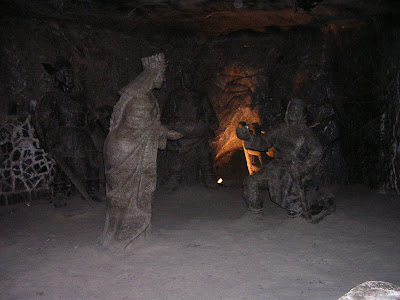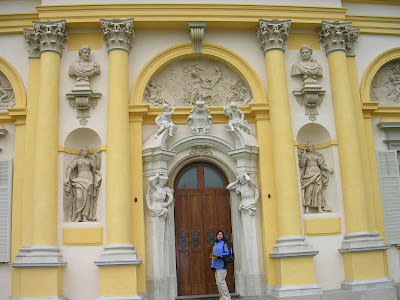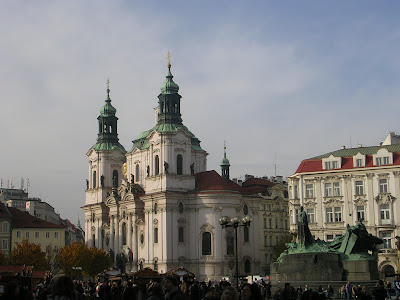
A couple of weeks ago we had a wonderful visit with our daughter Lauren and Aaron (her husband.)
who flew in from
Salt Lake City and after seeing
Old Town in Warsaw we went on a whirlwind 5-day trip with them to Krakow, Auschwitz and
Prague.
We enjoyed two nights in Krakow at a Bed and Breakfast, first visiting a Salt Mine that was amazing! David and I were just hoping for something to do that would get us out of the rain. But we had no idea what a treat we were in for when we first climbed down staircase after staircase after staircase. Lauren (our trip planner) had researched it and had a better idea, although it exceeded her expectations.

You can read about the Wieliczka Salt Mine online. We learned that it has been in operation for 900 years. Once, it was one of the “world's biggest and most profitable industrial establishments when common salt was commercially a medieval equivalent of today's oil.” Since the mid-18th century Krakow's Wieliczka Salt Mine has become increasingly a tourist attraction. For years David's saying "back to the salt mines," did not conjure the images we now have in mind. We were amazed by the many tunnels and art-work carved in the walls and chambers of the mine.

This picture was taken by David a week before the kids arrived. Located 20 minutes from where we live, Wilanow was built for Jan Sobieski (r. 1674-96), Poland's heroic monarch. Sobieski led the Catholic Allies in the liberation of Vienna from the Turks in 1683. Touring through this palace with Lauren and Aaron the day after we returned from our trip, I'm sure David will want to return for an indoor tour.

We loved the beautiful city Prague and enjoyed visiting a museum and the Old City Center there. It seems that all of the ancient cities of Central Europe have an "old town".
The magnificent churches and architecture spanning hundreds of years give each "old town" its distinctive appeal. It's fun to speculate on the lives that have walked the streets and wonder how each generation has left its mark to all that we now enjoy.
Even though we are experiencing these cities in the blustery fall or pre winter season, we managed to find a great deal of life and activity around every corner. Even though we were surrounded by many other tourists, we could sense

the unique culture of the local people of Praga. Praga is the Czech Republic spelling for Praque as we know it. It would be well worth a return trip to see the castles and other sites that we had no time to visit on this trip.
Thanks Lauren for being a terrific trip planner--we loved touring castles, the salt mine, eating out and visiting along the way! When we get together over Christmas we'll have to play Favorite Five again adding some elements of our memorable vacation.



 We loved the beautiful city Prague and enjoyed visiting a museum and the Old City Center there. It seems that all of the ancient cities of Central Europe have an "old town".
We loved the beautiful city Prague and enjoyed visiting a museum and the Old City Center there. It seems that all of the ancient cities of Central Europe have an "old town". 